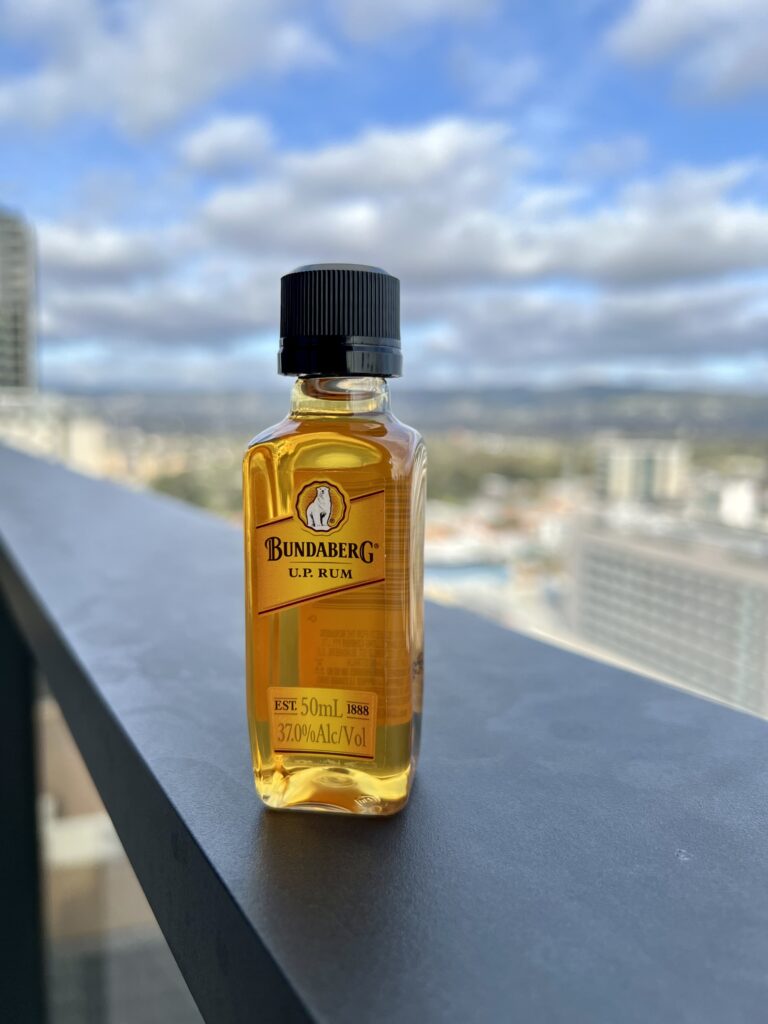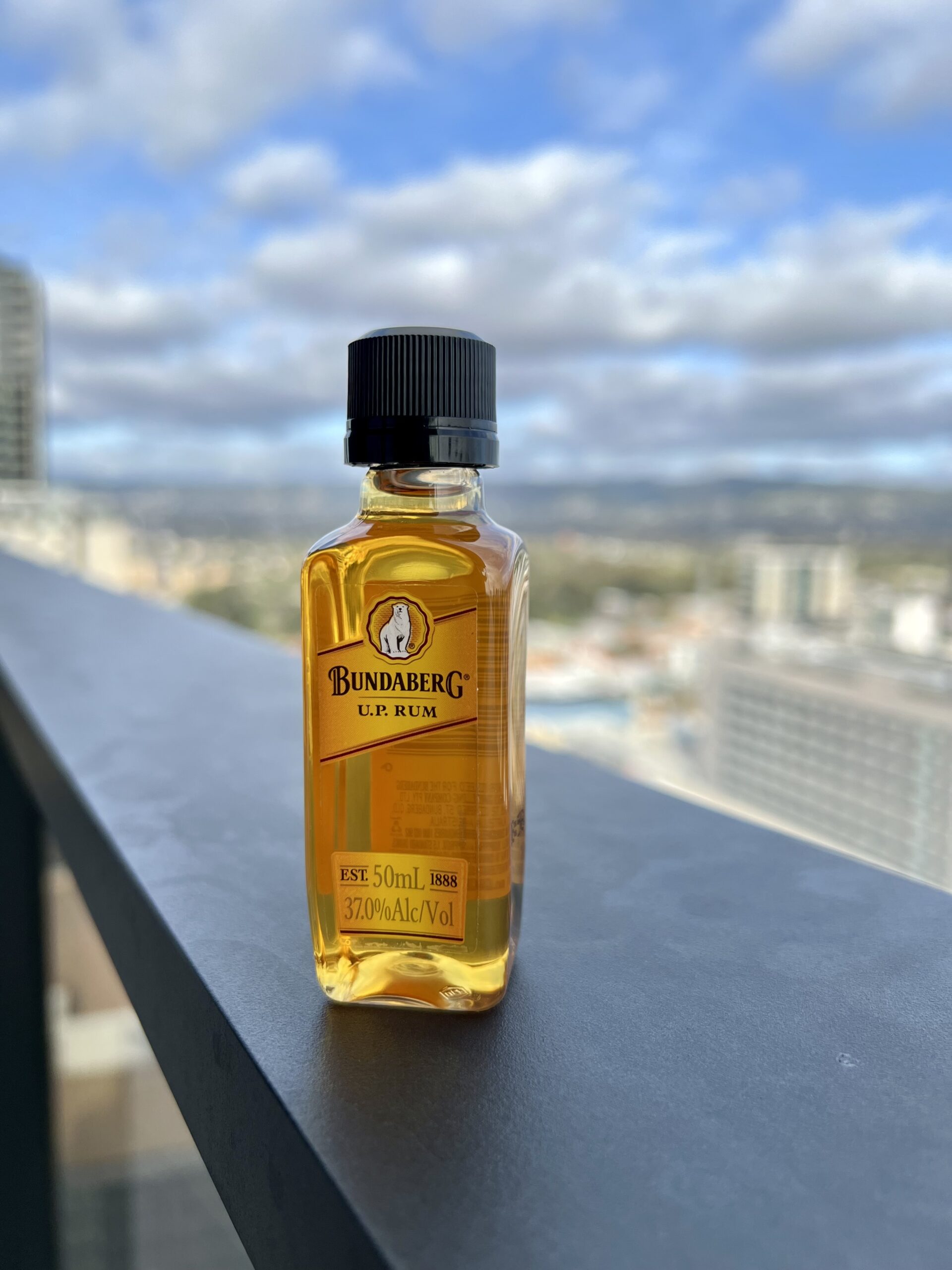
Colloquially known as Bundy, Bundaberg holds a special place in Australian hearts. The Bundaberg Distillery was started in 1888, and first produced rum in 1889. While the distillery had it’s ups and downs (it burning twice – in 1907 and 1936), locals have loved to love or loathe the stuff. The distillery was originally independent in Queensland, but was later sold to Diageo in 2000. Diageo now produces the spirit in both New South Wales and Bundaberg, Queensland (with more of the small batch offerings reportedly coming from the namesake). Coming in at the very bottom entry point of their line is Bundaberg UP Rum.
Bundaberg UP Rum
Produced from local (presumably Australian) sugar cane, Bundaberg’s original UP rum is a NAS offering sold at 37% ABV. It should be noted that the original Bundaberg rum is bottled at 50%. The rum is produced by Diageo, following their buy out of the
Sight: Deep Gold
Smell: The nose has a woody start, leaning into green cedar and forest floor notes. Caramel and funky molasses come to the forefront. A hint of tropical fruit is slightly present, and there’s something grassy and spicy in there. A slightly chemical note similar to fresh sporting equipment hangs around the edges wrapping the entire smell.
Sip: The body is medium to full, it picks up some woody spice and caramelized notes. There is a subtle sweetness and fruitiness that runs throughout, but it starts to get slightly warm for a rum that only clocks in at 37%. As it gets warmer, more of the wood notes get overwhelming, and a subtle burnt or treated wood flavor comes through.
Savor: The aftertaste has more treated wood and cedar notes, with a light spicing, touch of funk, and hints of something again, vaguely plastic – chemical like. There’s something like unripe tropical fruit that lingers.
Bundaberg UP Rum is a unique rum that has a love-hate local relationship, and that will feel unusual to rum drinkers not experienced with Bundaberg’s flavors. These notes, particularly the nose might make this sound some what pleasant to smell. In the sense that’s it rum, it smells rum like, this is true. As a nose amongst world rums, many will find this isn’t enticing and doesn’t make you want to try to savor a glass.
In Cocktails
Sadly due to traveling, I could not make a Daiquiri with Bundaberg UP Rum. In past experiences with Rum and Coke versions of Bundaberg, I can tell you that it is a bully, even with Coke, displaying that unripe fruit funk / slightly woody chemical note. This isn’t the first rum I’d reach for, but isn’t far off from the US spec Bacardi Gold (the Bacardi Gold might be better, but only just slightly).
In Review – Bundaberg UP Rum
While Bundaberg original rums have a place in the history of spirits within the Australian Spirit industry and are well loved (or reviled), there are signs the industry is moving on. Australia has a growing number of spirits producers (primarily in gin it feels) who are creating new and exciting spirits with different techniques and a flair toward the local. Rum is no exception, with one distiller in Western Australia (Illegal Tender) using dark brown cane sugar and ex-shiraz casks to embrace the wine and sugar industry. Bundaberg certainly seems to sense this, and their limited released have garnered generally improved reception, but not so much as to change the perception of their rums on the world stage.
Still this gives hope that Australian rum (and other Australian spirits) can continue to improve and begin to captivate palates around the world. In the meantime, Bundaberg UP Rum is more of a curiosity than a serious bottle to need to track down.
